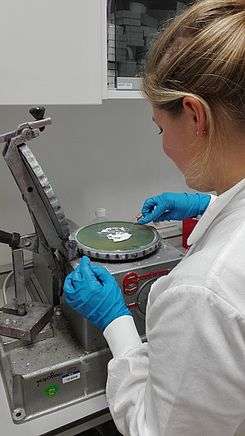Improved monitoring and prevention of aging of Picasso and Mondrian paintings

A consortium of researchers from the worlds of museum, science and industry have developed a method to establish the extent to which titanium white – an important white pigment – is causing modern paintings to age. The method can detect aging early in the process, meaning that timely action can be taken to protect major paintings. The results of the research have been accepted by the journal ACS Applied Materials & Interfaces.
Titanium white
Titanium white was commonly used in 20th-century oil paintings. The pigment is made from titanium oxide, with linseed oil used as a binding agent. Titanium white was introduced to the market in 1920, and can be found in works by artists including Picasso, Mondrian and Jackson Pollock. If no action is taken, the white pigment is certain to age the painting in the long term, causing the work to lose intensity, colour and lustre. This aging is caused by ultraviolet light.
Affordable
'Unfortunately, it was always difficult to establish with any precision whether the binding agent on the painting was already aging,' explains doctoral candidate Birgit van Driel, connected to both Delft University of Technology (TU Delft) and the Rijksmuseum. 'This meant that, once you had ascertained the damage, you were actually too late. That is why we collaborated with other researchers to develop an affordable means of monitoring how the paint ages, which can be used to help prevent irreversible damage to paintings in the future.'
Infrared analysis
Van Driel and her colleagues used various types of infrared spectroscopy in their research. 'This is the first time that we have been able to examine the degradation process of titanium white so closely, even at nanoscale, using AFM-IR (Atomic Force Microscopy-Infrared Spectroscopy) analysis. This allowed us to identify extremely specific peaks in the absorption process. These represent, as it were, a 'signature' for the aging of oil paint under the influence of titanium white in combination with ultraviolet light.'
Straightforward test
'Using an expensive and complicated technique such as AFM-IR on all paintings is unfortunately not a realistic option,' says Van Driel. 'But with the information gained from our AFM-IR analysis, and from other techniques, we thankfully now know exactly what we need to look out for. And in the future, it will be possible to monitor these indications using more straightforward, portable, non-invasive and affordable infrared techniques that are currently being developed. You could use these techniques every five years, for example, to ascertain which paintings are already being negatively affected by aging. And then, if necessary, you could take the required action. Reducing the amount of UV light to which the painting is exposed, for example.'
Wider application
Van Driel believes that the AFM-IR technique used in this research could also prove extremely useful in research into other issues concerning artists' paint. 'In general, we can say that there are still significant technological gains to be made with regard to the preservation of paintings. However, it goes without saying that a certain amount of investment is first required.'
More information: Suzanne Morsch et al. Investigating the Photocatalytic Degradation of Oil Paint using ATR-IR and AFM-IR, ACS Applied Materials & Interfaces (2017). DOI: 10.1021/acsami.7b00638
Journal information: ACS Applied Materials and Interfaces
Provided by Delft University of Technology


















